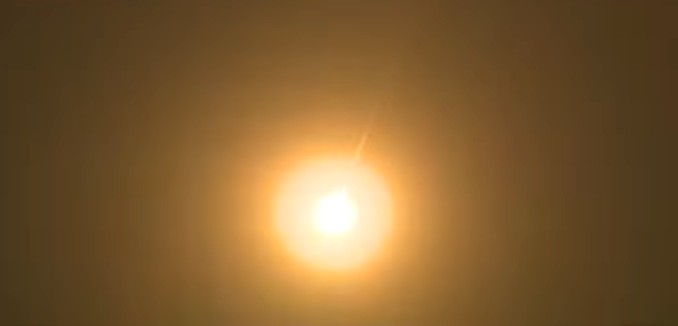For the first time since Operation Protective Edge in 2014 a Hamas-launched rocket reached Beersheba as red alert sirens sounded across southern Israel, triggered by approximately 200 rockets and mortars that were fired into Israel from Gaza on Wednesday night and Thursday morning, wounding dozens of Israelis, The Jerusalem Post reported.
The Iron Dome missile defense system intercepted 30 incoming projectiles headed for population centers. Most of the remaining rockets landed in open fields, the army said. In response to the indiscriminate attacks on Israeli civilians, the IDF struck over 130 targets inside Gaza, where the Islamist terror organization Hamas exercises complete political and military control.
The IDF destroyed Hamas military training facilities, a Hamas naval commando base, a weapons depot and a Hamas command center in Khan Yunis. These latest targets are in addition to the approximately 150 others that have been hit in response to repeated attacks by Hamas and other terrorist groups in the Palestinian enclave, since riots broke out along the border in March.
The Hamas-run Gaza Health Ministry said three Gazans were killed in the Israeli airstrikes overnight, including a fighter from Hamas.
The latest round of escalation between Hamas and Israel occurred after an exchange of fire between Israeli soldiers and Hamas fighters on Wednesday. Terrorists had fired on an Israeli construction vehicle near the border, and Israeli tanks struck four Hamas targets in retaliation. On Tuesday, Israeli artillery fire killed two members of Hama’s the Izzedine al-Qassam Brigades’ elite al-Nukhba unit, after they fired at IDF soldiers on the Gaza border.
With tensions rapidly rising between Hamas and Israel, The Israel Project reported from the affected border communities and hosted numerous experts on Thursday to offer first-hand insight on the situation in Israel.
Amos Harel, the military correspondent and defense analyst for Haaretz, told TIP that “the Israeli leadership is not seeking war,” and for Israel to send ground forces into Gaza is not a light decision. “Both Netyanhu and Lieberman are quite weary of the possibility” of a full-scale war, Harel observed.
Housing Minister Yoav Gallant, a former head of Southern Command during the 2009 Cast Lead operation in Gaza, echoed hopes to continue peace negotiations, including with Egypt. Gallant clarified, however, that “Whatever we must do to protect our citizens and our soldiers will be done, no matter what the price will be in Gaza.” The minister charged that “Hamas is taking two million Palestinian citizens as hostages. If they won’t behave themselves, they will set Gaza 10 years backward after this struggle.”
Ehud Yaari, a fellow at the Washington Institute for Near East Policy, observed that “We have here a game in which both parties are trying to reach an understanding but are being swept into a sort of escalation.” Yaari speculated that tensions may continue to rise “partly because of public pressure in Israel, partly because you can’t tell people in the south they can go on like this.”
Some experts put the escalation overnight down to a show of force by Hamas as peace talks over the future of the coastal enclave continue. “As we approach a potential agreement it’s extremely important for Hamas to deliver the message that we are not going there because we are weak,” said Yossi Kuperwasser, a retired brigadier general and the former director general of Israel’s Ministry of Strategic Affairs. Israel in turn needs to send the message that there’s a “price to pay,” he said.
[Photo: i24NEWS / YouTube ]




